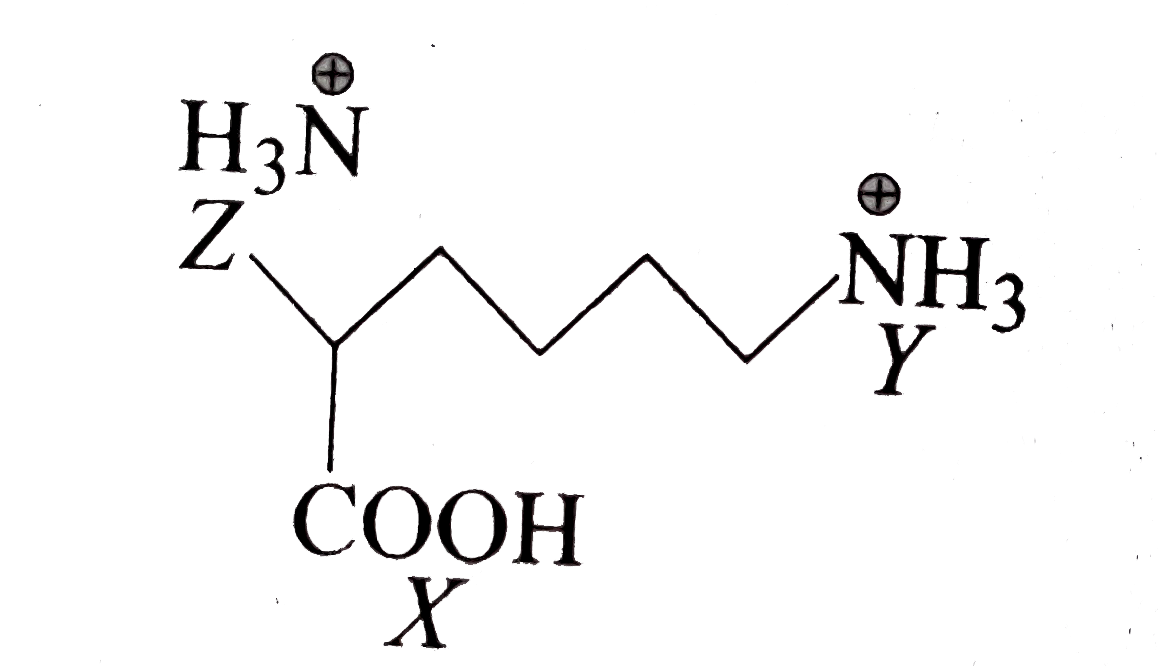Arrange K,Ca and Li in order of increasing electrode potential.
To arrange potassium (K), calcium (Ca), and lithium (Li) in order of increasing electrode potential, we need to understand the concept of electrode potential and the factors that influence it. Here’s a step-by-step solution:
Step 1: Understand Electrode Potential
Electrode potential is the tendency of a metal to lose electrons and form positive ions. It is influenced by three main factors: enthalpy of sublimation, ionization enthalpy, and hydration enthalpy.
Hint: Remember that a higher electrode potential indicates a greater tendency to gain electrons (or a lower tendency to lose them).
Step 2: Identify the Elements
The elements in question are potassium (K), calcium (Ca), and lithium (Li). They are all in the s-block of the periodic table.
Hint: Know the positions of these elements in the periodic table to understand their properties.
Step 3: Analyze Ionization Energies
- Lithium (Li) has the smallest atomic size among the three, leading to a higher ionization energy.
- Potassium (K) is larger than lithium, resulting in a lower ionization energy.
- Calcium (Ca), being a group 2 element, has a higher ionization energy than potassium but lower than lithium.
Hint: Smaller atoms generally have higher ionization energies due to stronger attraction between the nucleus and the outermost electrons.
Step 4: Consider Hydration Enthalpy
- Lithium (Li) has a high hydration enthalpy due to its small size, which allows it to be heavily hydrated.
- Potassium (K) has a lower hydration enthalpy compared to lithium.
- Calcium (Ca) has a moderate hydration enthalpy, higher than potassium but lower than lithium.
Hint: Hydration enthalpy is significant for smaller ions because they can interact more strongly with water molecules.
Step 5: Combine the Enthalpies
The overall electrode potential can be considered as:
Electrode Potential=Enthalpy of Sublimation+Ionization Enthalpy−Hydration Enthalpy
- For Lithium (Li): High ionization and hydration enthalpy lead to the most negative electrode potential (-3.05 V).
- For Potassium (K): Lower ionization and hydration enthalpy than lithium give it a less negative potential (-2.93 V).
- For Calcium (Ca): It has the least negative potential (-2.87 V) due to its larger size and lower ionization energy.
Step 6: Arrange in Order
Based on the electrode potentials calculated:
1. Lithium (Li): -3.05 V
2. Potassium (K): -2.93 V
3. Calcium (Ca): -2.87 V
Thus, the order of increasing electrode potential is:
Li < K < Ca
Final Answer: Li < K < Ca
Electrode potential is the tendency of a metal to lose electrons and form positive ions. It is influenced by three main factors: enthalpy of sublimation, ionization enthalpy, and hydration enthalpy.
The elements in question are potassium (K), calcium (Ca), and lithium (Li). They are all in the s-block of the periodic table.
- Lithium (Li) has the smallest atomic size among the three, leading to a higher ionization energy.
- Potassium (K) is larger than lithium, resulting in a lower ionization energy.
- Calcium (Ca), being a group 2 element, has a higher ionization energy than potassium but lower than lithium.
- Lithium (Li) has a high hydration enthalpy due to its small size, which allows it to be heavily hydrated.
- Potassium (K) has a lower hydration enthalpy compared to lithium.
- Calcium (Ca) has a moderate hydration enthalpy, higher than potassium but lower than lithium.
The overall electrode potential can be considered as:
Electrode Potential=Enthalpy of Sublimation+Ionization Enthalpy−Hydration Enthalpy
- For Potassium (K): Lower ionization and hydration enthalpy than lithium give it a less negative potential (-2.93 V).
- For Calcium (Ca): It has the least negative potential (-2.87 V) due to its larger size and lower ionization energy.
Based on the electrode potentials calculated:
1. Lithium (Li): -3.05 V
2. Potassium (K): -2.93 V
3. Calcium (Ca): -2.87 V
Li < K < Ca
Topper's Solved these Questions
- APPENDIX - INORGANIC VOLUME 1BOOK - CENGAGE CHEMISTRY ENGLISHCHAPTER - APPENDIX - INORGANIC VOLUME 1EXERCISE - chapter-2 Multiple correct answer
2 Videos
- APPENDIX - INORGANIC VOLUME 1BOOK - CENGAGE CHEMISTRY ENGLISHCHAPTER - APPENDIX - INORGANIC VOLUME 1EXERCISE - chapter-2 Single correct answer
3 Videos
- APPENDIX - INORGANIC VOLUME 1BOOK - CENGAGE CHEMISTRY ENGLISHCHAPTER - APPENDIX - INORGANIC VOLUME 1EXERCISE - Exercise very short
70 Videos
- ALKYNESBOOK - CENGAGE CHEMISTRY ENGLISHCHAPTER - ALKYNESEXERCISE - Exercises (Archives - Analytical and Desriptive Type)
4 Videos
- ATOMIC STRUCTUREBOOK - CENGAGE CHEMISTRY ENGLISHCHAPTER - ATOMIC STRUCTUREEXERCISE - Concept Applicationexercise(4.3)
19 Videos
Similar Questions
Knowledge Check
Arrange in increasing order of s character
Asp3<sp2<spBsp<sp2<sp3Csp2<sp<sp3Dsp2<sp3<sp
Arrange the following in the order of increasing entropy:
View SolutionArrange in order of increasing acidic strength
_CHE_E06_190_Q01.png)
View SolutionArrange in the order of increasing acidic strengths.

View SolutionArrange the halide ions in order of increasing basicity and nucleophilicity.
View SolutionThe following reaction occurs at 700K. Arrange them in the order of increasing tendency to proceed to completion.
I.
View SolutionArrange the following ions in order of increasing ionic radii.
Li+,Na+,Al3+,K+,Mg2+
View SolutionArrange Be,Mg,Ca,Sr and Ba in increasing order of reactivity.
View Solution
